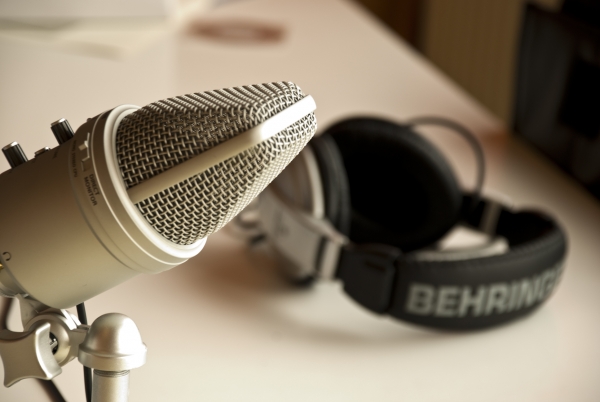By: Kamal Hylton
In our first post about podcasting for the job market, Let Your Voice Be Heard, we looked at the general idea of podcasts as a way to get noticed within your industry and shared building blocks to take your idea from a concept to reality. This post looks at the technical side of podcasting, covering the specifics of how to podcast and what to keep in mind during the process.
Assuming you’ve already planned out your idea, come up with an outline of topics, have all your guests gathered and have a general idea of how long you want your podcast to be (if you haven’t done this please re-read Let Your Voice Be Heard before continuing). You’re now ready for the recording phase, the fun part of podcasting.
RECORDING PHASE — EQUIPMENT, ENVIRONMENT, SPACING AND PACING
While this part is very fun, aside from the actual planning and conception of things, it’s also arguably the most important part and factors in more than just what method you plan to use when recording. This is when you have to keep the listener’s experience firmly in mind at all times. This means being mindful of not only how you’re going to record (Audio Voice Recorder, Skype etc…) but also where you’re going to record (Quiet Room or Public Venue), keeping the conversation flowing naturally (taking pauses, spacing out segments and timing, getting all points across without being long-winded).
Like I mentioned in Let Your Voice Be Heard, you don’t need to spend money on fancy recording equipment to produce a good podcast unless you’re looking to be in the radio industry. Spending $30-40 on a decent Digital Audio Recorder will work just fine. However if you plan to record via Skype, other software or even your phone, you have to be willing to accept tradeoffs. While going this route will allow you to talk to different guests from different cities or timezones, sometimes that will come at the expense of differing sound quality. Not being in the same room will also make spacing and pacing your speech more important.
Choosing the environment to record in is also vital. If you’re recording in a quiet room, it will be a different listening experience than choosing a public venue. Before officially recording, test out how audio sounds in the different environments and whether it will affect the conversation. Sometimes background noise can help set a different mood, but you don’t want anyone to be drowned out or yelling into the microphone as it won’t make for pleasant listening.
As for word spacing and pacing, while having a natural conversation, an enthralling interview or explaining what you feel are great points will be interesting to those involved, there still needs to be a natural rhythm. Pausing often or taking short breaks between points might seem unnatural, but can actually become your best friend. When ready to record, another good tip is to set a timer so you can judge how long the podcast’s length. Aim for 30-60 minutes. Anything longer than that tends to have listeners tune out.
Once you feel ready to go, just hit record, set your timer, and let things flow!
EDITING PHASE — SOFTWARE, KEEPING THE FLOW INTACT AND ADDING PERSONALITY
If recording is the fun part to podcasting, then for most people, editing is the boring part and can get quite tedious due to constantly having to listen to sections of the recording repetitively, cutting and splicing parts together and playing with the audio levels so the final product is more palatable. Those unnatural pauses, spacing and pacing of speech and selection of venue I mentioned in the recording phase, this is where it all pays off and can make your life easier.
However before you start playing mad scientist with your podcast recording, get to know your editing software by practicing on another piece of audio just like you did when testing out the quality of the podcasting environment. Whether you’re using Garageband, Adobe Audition, Audacity or something else, taking the time to find out where all the key tools are and how to use them will allow you to stay focused and patient. While this can be a painstaking process at the beginning, over time, it will become easier to handle and can even become enjoyable. This is the time where you can give your podcast some flavour, whether that’s through adding intro and outro music, music to different segments, adding pre-recorded interviews or anything else that makes you podcast stand out.
Once you’ve listened through, cleaned the audio up so it flows and added any special touches, you’re ready to save your work and export your finished product for the final phase. One thing to keep in mind when exporting is file size, keeping it at a reasonable size for whatever output source you choose.
OUTPUT PHASE — PROMOTING TO THE RIGHT AUDIENCE
There are many methods, or combination of methods, you can use to get your podcast out to the public. Some of the most popular ones include iTunes, Soundcloud, Stitcher and TuneIn Radio. In most cases, the free version of some of these will be good enough for your podcast, but some offer additional space to upload bigger audio files for a small fee. The important part to getting your podcast noticed is by posting it in the appropriate section, putting in notable “tags” or “keywords” that will help it pop up when listeners search for it and getting your audience to put in ratings and reviews. Getting enough positive feedback will help your podcast rise in search engines, allowing for your audience to grow and for potential employers to take notice.

